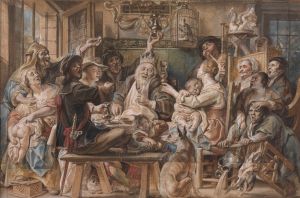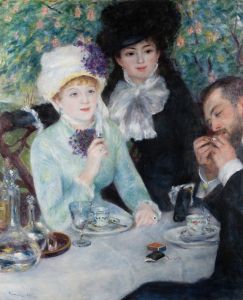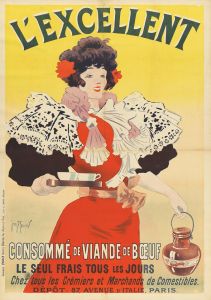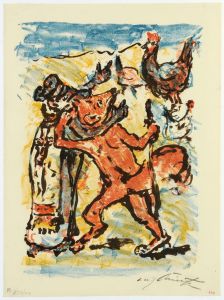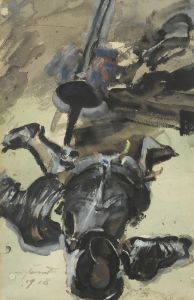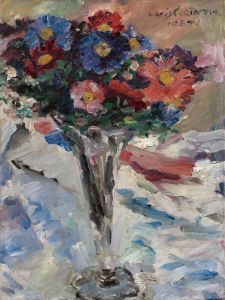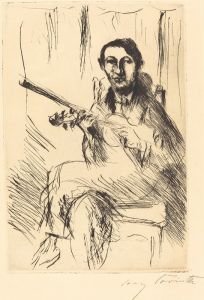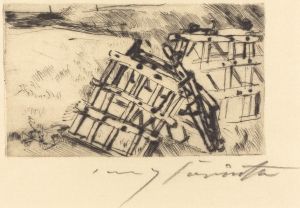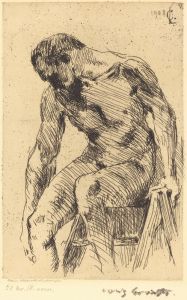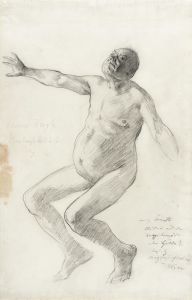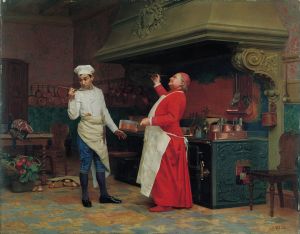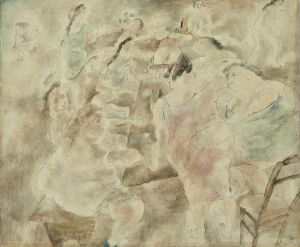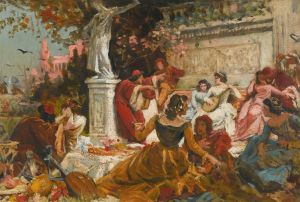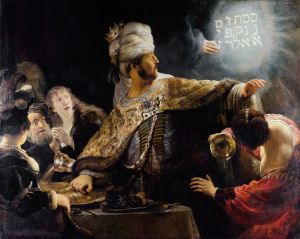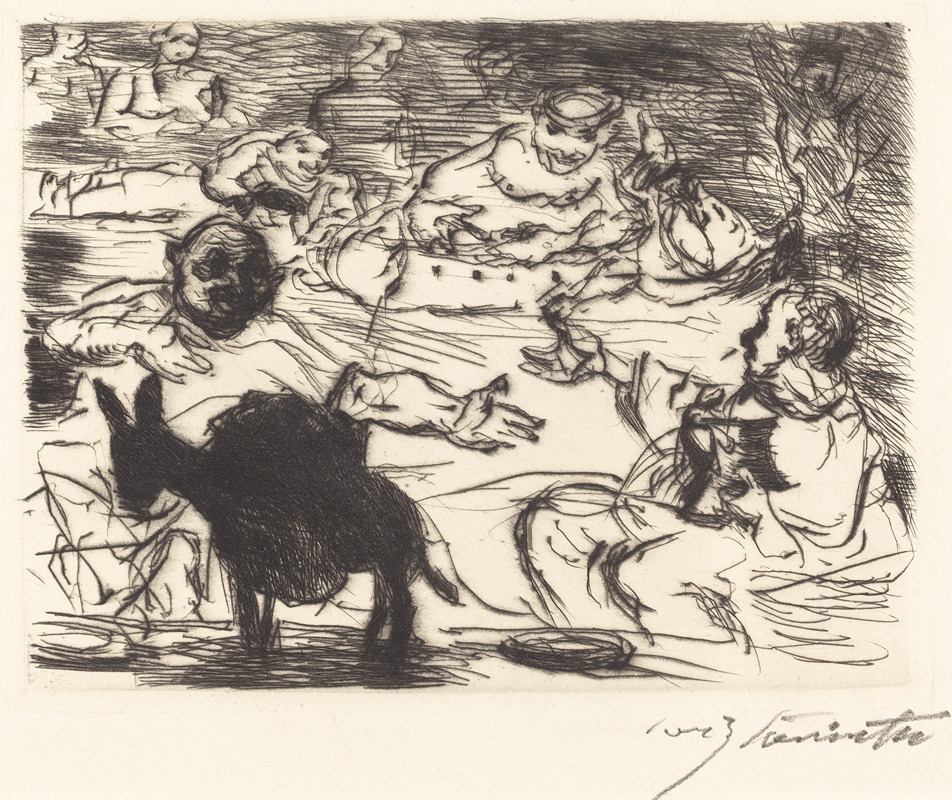
The Banquet of Trimalchio; pl.V
A hand-painted replica of Lovis Corinth’s masterpiece The Banquet of Trimalchio; pl.V, meticulously crafted by professional artists to capture the true essence of the original. Each piece is created with museum-quality canvas and rare mineral pigments, carefully painted by experienced artists with delicate brushstrokes and rich, layered colors to perfectly recreate the texture of the original artwork. Unlike machine-printed reproductions, this hand-painted version brings the painting to life, infused with the artist’s emotions and skill in every stroke. Whether for personal collection or home decoration, it instantly elevates the artistic atmosphere of any space.
Lovis Corinth was a German painter and printmaker whose work is associated with the transition from Impressionism to Expressionism in German art. One of his notable works is "The Banquet of Trimalchio; pl.V," which is part of a series of illustrations Corinth created for Petronius's "Satyricon." This series was produced in the early 20th century and reflects Corinth's interest in classical literature and his ability to translate its themes into visual art.
"The Banquet of Trimalchio" is a famous episode from the "Satyricon," a Latin work of fiction believed to have been written by Gaius Petronius Arbiter during the Neronian era. The story is a satirical portrayal of Roman society and features a lavish banquet hosted by Trimalchio, a wealthy freedman known for his ostentatious display of wealth and eccentric behavior. This scene has been a popular subject for artists due to its vivid depiction of Roman decadence and excess.
Corinth's interpretation of "The Banquet of Trimalchio" is notable for its dynamic composition and expressive style. He captures the chaotic and extravagant atmosphere of the banquet, emphasizing the opulence and indulgence that characterize Trimalchio's feast. The artwork is part of a series of prints, and "pl.V" indicates its position within this series. Corinth's use of bold lines and dramatic contrasts in his printmaking technique enhances the sense of movement and energy in the scene.
Lovis Corinth was known for his ability to convey emotion and movement through his art, and "The Banquet of Trimalchio; pl.V" is a testament to his skill in capturing the essence of a narrative. His work often explored themes of human nature, society, and the passage of time, which are also central to the "Satyricon." By illustrating this particular episode, Corinth not only engaged with a classical text but also commented on the timeless nature of human folly and excess.
The series of illustrations for the "Satyricon" was created during a period when Corinth was transitioning in his artistic style. Initially influenced by Impressionism, his later works, including this series, show a shift towards a more expressionistic approach. This evolution is evident in the way he handles form and space, as well as in the emotional intensity of his compositions.
Corinth's work on "The Banquet of Trimalchio" is an example of how artists of his time were revisiting classical themes and reinterpreting them through a modern lens. His ability to blend historical subject matter with contemporary artistic techniques made his work stand out in the early 20th-century art scene. The series remains an important part of Corinth's oeuvre and contributes to our understanding of how classical literature continued to inspire and influence artists long after its creation.
Overall, "The Banquet of Trimalchio; pl.V" by Lovis Corinth is a significant work that showcases the artist's mastery of printmaking and his engagement with classical themes. It reflects both the historical context of the "Satyricon" and the artistic innovations of Corinth's time, making it a valuable piece for both art historians and enthusiasts of classical literature.





